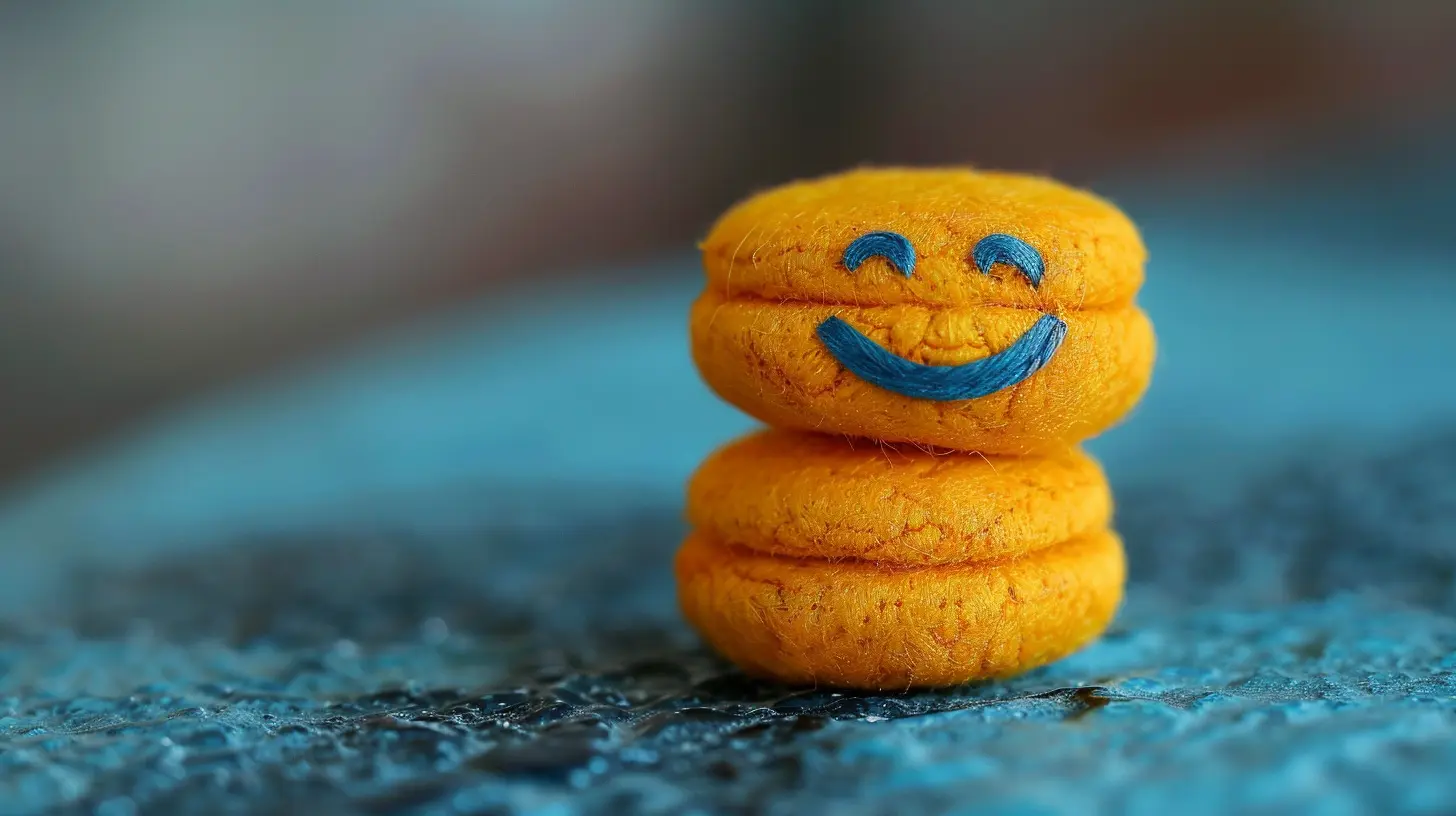How Mindfulness Practices Can Help Alleviate Depression
4 August 2025
Have you ever felt like your thoughts were running wild, dragging your mood down like a heavy blanket you just couldn’t shake off? We’ve all had those moments. But for people dealing with depression, this can be an everyday struggle—one that feels never-ending. What if there was a way to gently step off the mental rollercoaster and breathe again?
Welcome to the world of mindfulness. It’s simple, free, and surprisingly powerful. In today’s fast-paced world full of distractions and stress, mindfulness is like your mind’s “reset” button—offering calm in a storm of chaos.
In this post, we're going to unpack how mindfulness practices can help alleviate depression—no fluff, just real talk, heartwarming hope, and a path you can actually follow.
What Is Mindfulness, Anyway?
Mindfulness is not about becoming a zen monk or sitting awkwardly in silence for hours. At its core, mindfulness is the practice of paying attention to the present moment—without judgment.Think of it like this: your mind is like a snow globe. When you shake it (aka stress, overthinking, anxiety), everything swirls around in a fog. Mindfulness lets the snow settle so you can see things clearly again.
It’s about noticing what's going on inside and outside of you—your thoughts, your feelings, your body, your environment—and accepting it all just as it is. No fixing, no rejecting, just being.
Depression vs. Mindfulness: What’s the Connection?
Let’s face it: depression is more than just feeling sad. It's this heavy, numbing fog that can cloud your life. You may feel stuck in the past, fearful of the future, and totally disconnected from the present.Here’s where mindfulness steps in like a warm cup of tea on a cold day.
Mindfulness pulls you back into the now. It invites you to observe your thoughts instead of being consumed by them. You start to recognize patterns—like when negative self-talk shows up—and you can gently choose not to engage. It's this awareness that creates space for healing.
In short? Mindfulness gives you back your power. 
Science-Backed Benefits of Mindfulness for Depression
Still not convinced? Let’s bring in the science (don’t worry, we’ll keep it light).1. 👩🔬 Rewires the Brain
Multiple studies show that mindfulness practice can physically change the brain—especially areas linked to emotion regulation. The amygdala (which triggers fear and stress) shrinks, while the prefrontal cortex (responsible for rational thinking) lights up like a Christmas tree.Translation: you become less reactive and more in control.
2. 🛌 Improves Sleep Quality
Ever lie awake replaying the same worries over and over? Depression and insomnia love to go hand-in-hand.Mindfulness helps switch off the mental chatter. With your mind calmer, falling—and staying—asleep becomes way easier. And we all know how much better everything feels after a good snooze!
3. 💬 Reduces Rumination
Rumination is like having a bully in your head that never shuts up. Mindfulness helps you step back and observe those thoughts without getting sucked in. Over time, that overthinking spiral starts to lose its grip.4. 💗 Enhances Emotional Resilience
Mindfulness doesn’t make life perfect, but it makes you more capable of riding out the hard days. It builds emotional “muscles” so you’re not crushed by every wave that hits. You bounce back quicker—and stronger.
How to Start Mindfulness (Even If You Have Zero Experience)
Now you might be thinking, "Okay, this sounds great, but where do I even begin?"Good news—mindfulness is incredibly beginner-friendly. You don’t need any fancy gear or apps (though they can help). Just start small, stay consistent, and be kind to yourself.
1. Start With the Breath
The easiest way to begin? Focus on your breathing.Take a minute. Breathe in slowly...then out. Feel the air move through your nose, into your lungs. Notice how your chest rises and falls. That’s it.
Do this for 1-5 minutes a day. Don’t worry if your mind wanders—it will. Just gently bring it back to the breath.
2. Try a Body Scan
Lay down comfortably. Close your eyes. Now slowly bring your attention to different parts of your body, one piece at a time—feet, legs, hips, back, arms, neck, face.Notice any tension, warmth, numbness, or sensation. No judging. You’re just checking in.
3. Mindful Walking
You don’t have to sit still! Walking meditations are amazing. Focus on the feeling of your feet hitting the ground, the sound of birds, the rhythm of your steps.Even a 10-minute stroll can be a peaceful, grounding experience.
4. Use Guided Meditations
Feeling a little lost? Apps like Headspace, Calm, and Insight Timer offer guided sessions for beginners. You just press play and follow along.Bonus: They often have specific programs designed for depression and anxiety.
Tips To Make Mindfulness a Daily Habit
Let’s be honest—building a new habit isn’t always easy. But these tips can help make mindfulness feel natural, not like another “to-do” on your list.- Start small. A few minutes a day is more than enough in the beginning.
- Set reminders. Use alarms or calendar notifications. Think of it like a coffee break for your mind.
- Pair it with existing habits. Meditate after brushing your teeth or before your morning coffee.
- Keep a journal. Track how you feel before and after your sessions. Over time, you’ll see the shift.
- Be patient. You’re rewiring your brain, not performing miracles in a day. Progress is slow but powerful.
Using Mindfulness in Real Life Situations
Here’s the best part: mindfulness isn’t just for meditation cushions. You can take it into your everyday life.- Eating? Really taste your food. Notice the texture, flavor, colors.
- In traffic? Instead of getting frustrated, observe your feelings. Breathe deeply. You can’t control the jam, but you can control your reaction.
- Having a tough emotion? Label it: “This is sadness.” Then breathe into it. Let yourself feel without panicking or overthinking. Emotions are like clouds—they pass.
Mindfulness vs. Medication or Therapy
Let’s clear something up: mindfulness isn’t a replacement for therapy or medication if you're dealing with clinical depression. It's a complement.Think of it like this: medication can be the medical support, therapy is emotional support, and mindfulness is self-support.
The trio together? Powerful stuff.
Real Stories, Real Hope 🌈
Many people have embraced mindfulness and found their way back from the depths of depression. Like Sarah, who struggled with post-partum depression and used daily mindful walks to reconnect with herself. Or James, whose panic attacks lessened after incorporating breathing exercises into his lunch breaks.Mindfulness didn’t “cure” them—but it gave them tools, moments of peace, and a sense of control.
And if they can do it? So can you.
Final Thoughts: You’ve Got This
Mindfulness won’t magically erase depression overnight. It’s not a quick fix. But it is a gentle, sustainable way to reconnect with yourself, quiet the chaos, and rebuild your inner light—one breath at a time.It’s like planting seeds. At first, you may not see much. But with practice and patience, something beautiful grows.
Start small, be consistent, and most importantly—be kind to yourself. You’re doing better than you think. 🌷
Frequently Asked Questions (FAQs)
🧘♂️ Is mindfulness safe for everyone?
Yes, it’s generally safe! But if you’ve experienced trauma or have severe depression, it’s worth checking with a mental health professional first.⏳ How long before mindfulness starts working?
Some people feel calmer almost immediately. But for lasting change, it usually takes a few weeks of regular practice. Like working out—consistency matters.📱 Do I need an app or can I do it alone?
You can totally do it alone! Apps just offer structure, which can be helpful when you’re starting out.😟 What if I keep getting distracted?
That’s completely normal! Distraction is part of the process. Every time you notice your mind wander and gently bring it back—that’s mindfulness in action.all images in this post were generated using AI tools
Category:
DepressionAuthor:

Jenna Richardson
Discussion
rate this article
1 comments
Talis Baker
Loved this article! Embracing mindfulness can truly be a game-changer for those facing depression. It's like giving your mind a cozy hug! Remember, even small steps count. Let’s sprinkle a little awareness into our daily lives and watch the positivity bloom. Keep shining and stay mindful! 🌟
August 24, 2025 at 3:17 PM

Jenna Richardson
Thank you for your kind words! I'm glad you found the article helpful. Embracing mindfulness truly can make a significant difference. Let's keep spreading awareness together! 🌟


